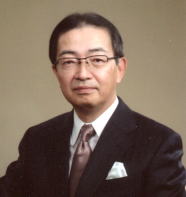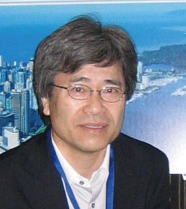| What is Academy of Fetal ECG? |
 |
| Greeting form the Chairman |
The healthy development of children is the wish of all parents. Recent studies all seem to indicate that fetal development in a less than ideal uterus environment can have significant influence in the onset of various diseases as the child comes of age, including metabolic syndrome. We as healthcare professionals must assume a greater role in helping to achieve the optimal environment in the uterus.
A fetus sends signals in response to the state and various conditions of the mother's body including the function of the placenta influence the uterus environment. Presently however, we do not seem to have the means to fully catch and understand all these fetal indications with current medical equipment.
Monitoring and observing the fetal electrocardiogram continuously will give us meaningful and profound information. As an electrocardiogram enables us to not only monitor for cardiac abnormalities, it allows us to observe the vital information of the fetus, including the automatic nervous system. These valuable measures that aids in the survival of the fetus from the stresses of labor and birth, as well as treatment immediately after delivery.
Our research in collecting fetal electrocardiograms envisioning the healthy development of the children, aims at the clinical application. We sincerely hope to garner an interest and deepen the understanding of many both within Japan, as well as the international community.
|
Kunihiro OKAMURA
Academy of Fetal ECG Chairman

|
| Establishement of Academy of fetal ECG |
Here in Japan, approximately one million babies are born every year. We would like to think that the Japanese medical standard is the highest and that delivery is safe. However, approximately 300,000 babies become ill in the uterus (reassuring fetal state), and approximately 3,000 babies face severe health issues. Unfortunately, many of these facing severe health issues won’t survive, or if they do, they may face severe disorders such as cerebral palsy or newborn intestinal tract necrosis.
The development of ultrasound technology greatly changed obstetrics medical care and has allowed us to easily monitor the state of the fetus. However, the frequency of severe disorders such as cerebral palsy has hardly changed in the past 50 years. Rather, due to an increase of premature births, severe disorders have actually shown an upward trend.
We developed the fetal electrocardiogram measurement device to monitor the fetus more closely, believing this could lead to saving more lives. This machine can monitor the electrocardiography of the fetus in the uterus. This close monitoring of the fetus enables us in diagnosing dangerous states such as hypoxia or a cardiac incident, thus reducing the risks at the time of delivery.
In the near future we wish many lives will be saved by spreading the use of fetal electrocardiogram devices during delivery throughout Japan, as well as by increasing the exchange of information by the doctors involved in these deliveries. My hope is that we can greatly improve perinatal medical care through the use of medical devices such as fetal electrocardiogram devices.
|
Yoshitaka KIMURA
Professer of Advanced Interdisciplinary Biomedical Engineering in Tohoku
University School of Medicine

|
|
|